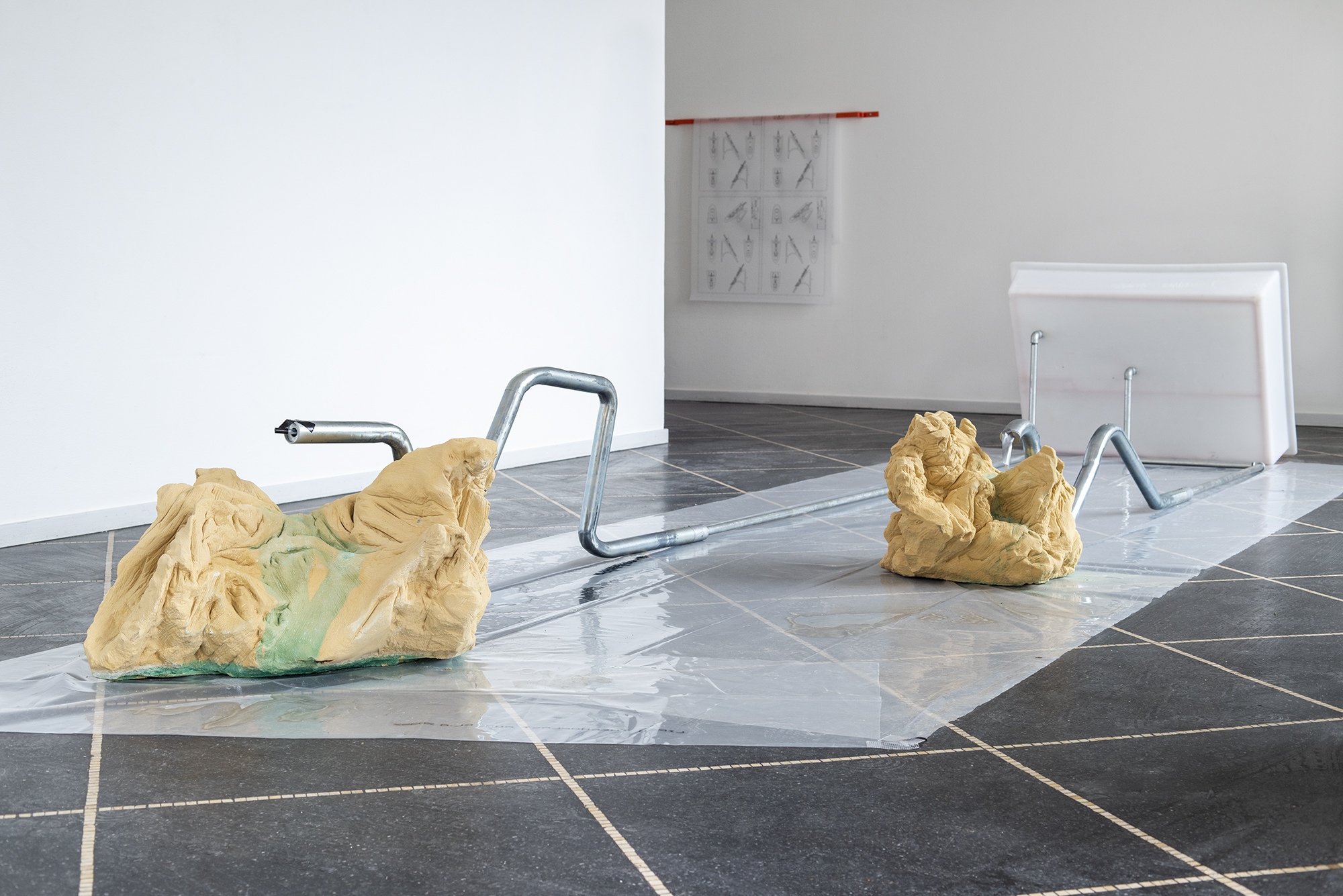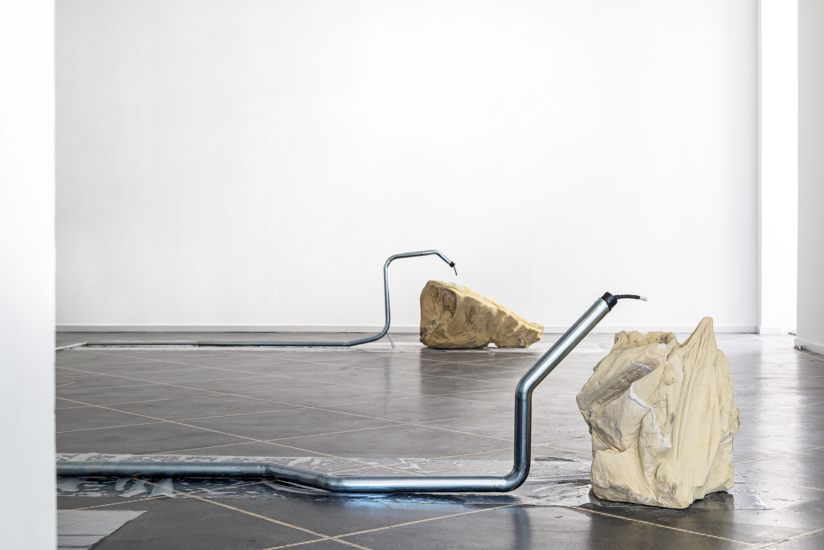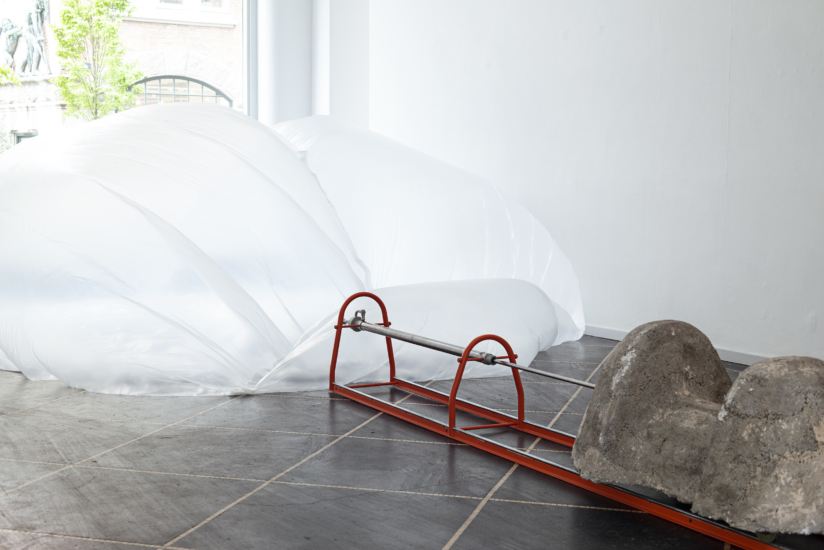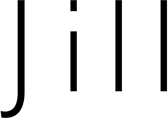
BEHIND THE SCENES:
PER KIRKEBY,
"Brick Sculptures"

BEHIND THE SCENES:
IDE TO PUGLIA
"Ceramic & Food Route",
Recent Summer 2019 Highlights

JSVC HIGHLIGHTS:
ART & LANGUAGE, LONDON

BEHIND THE SCENES:
DRAW ART FAIR LONDON

BEHIND THE SCENES:
ART & LANGUAGE, EXHIBITION AT GALERIE MICHAEL JANSSEN, Berlin

BEHIND THE SCENES:
DR. SUSANNE A. KUDIELKA,
Private art collecting is a passion

STILL BEHIND THE SCENES:
NINA NOWAK’S EXHIBITION
Galleri Susanne Ottesen, Copenhagen
July 5th 2021

PART I
I have been back from Copenhagen for well over a week. In this period many other things have happened. But in the last post I shared with you the pleasure of serious work on a catalogue raisonné project on the Kirkeby Bricks, The Unrealised Projects. But I was so taken by this that I neglected to share the unassuming brilliance of the exhibition on view at the gallery by Polish born artist Nina Nowak. “A Timeline Starting on the Surface”, a sculpture exhibition of such originality that I had to stand in the gallery for quite a moment before bursting into the office to see Susanne and the team after such a long absence of almost a year.
What you see walking into the gallery are odd sculptures in which have a combination of materials, organic and inorganic, large clumps of some material you can’t put your finger on, crumbled, forms in tan cratered lumps with pigment splashed on them. There are two large lumps and metal tubing leading to an upended white plastic industrial tray. Best of all I must tell you is the thin plastic sheeting on the floor. It made me laugh out loud for its brilliance. Not something I am used to these days, walking into a gallery and smiling much less laughing because an artist has surprised me so deeply with such a dazzle of normally inarticulate materials.

Material: marl, copper oxide, galvanized steel pipes, powder coated steel, plastic basin, water, plastic bags, soil,
dimensions variable, detail
I walked around this work for a long time, and then saw the drawings on mylar-like film hanging like dish towels on the wall; superb in their matter-of-factness. Then turning around the angle of wall the rest of the show opened up like a chorus. It took a while and a conversation with the gallerist to focus on the aspect of liquidity in the constructions. But on their own as a constructed series of never-before-seen combinations of odd clumps and metal in various interactions, I thought about the early works of Cady Noland, and more recently Tatiana Trouvé, these lumpy bumps reminded me of the almost ugly early polycarbonate works of Eva Hesse and many years later, British Sculptor Richard Deacon, who was a tutor in her studies in Düsseldorf. This is sculpture as installation and construction. The aspect of playing around with how things could mash together is very evident. You have to be very assured in your practice to make unattractive materials sing.

Material: print on architectural paper, powder coated metal bar, 107 x 183 cm, ed. 1/3
PART II
Coming around that corner there was a long work with an orange painted metal structure that somehow seemed to connect another strange object/form that without touching you would assume was concrete, leading somehow to a kind of transparent collapsed balloon of enormous proportion. You wanted to understand the relationship between the parts because it implied a cause and effect, but on its own it was so damn beautiful the lightness again of this plastic collapsed parachute like form, the orange non-machine and this organic boulder of some mysterious content.

Material: Powder coated steel, concrete, pneumati pump, foil, tape, 57 x 67 x 371 cm, detail
The show’s apotheosis was a very large installation in the final and largest gallery space — many component parts that took the structural columns of the gallery, the walls and floors as part of the set up. Amazing but complex in a way, quirky in a way that is very hard to describe here. Astonishing though is Nowak’s use of structures that seem to be doing one thing but actually do another. There are small touches that catch your eye like small punctuations quietly placed at certain moments of dramatic implication. In the first work my gaze settled on a small u-shaped metal support that seemed like an afterthought pinched from a game of croquet.
Reading the press release, you learn these clusters of stone are drawn from the interior tunnelling of the mountain that come to morph over time through their interaction with an exposure to various external factors. The constructions are called borderlands between organic and inorganic, the sculptures have moving parts, liquids that flow includes water and copper oxide used from various containers into basins, dispersed via a network of pipes. Some on a regular basis and other too slow to notice. The work with the huge balloon, presents cement itself composed of grains of marl, transformed into a tool in its own right which when pumped back and forth along a track bears the capacity to inflate a room-sized cube with air.

Material: marl, copper oxide, galvanized steel pipes, powder coated steel, plastic basin, water, plastic bags, soil, dimensions variable, detail
PART III
The uncanny formalism of this challenging family of odd children is a refreshing confrontation with expectations of what sculpture can be and might be. It was surprising to me in ways that reminded me of seeing the Eva Hesse show in New York at the Guggenheim Museum in 1973. Maybe it was there I learned that odd materials had unemphatic power. In a text that accompanies the project by Rosa de Graaf, Curator at Kunstinstituut Melly (formerly the Witte de With in Rotterdam), we learn about Nowak’s view of tunnels inside a mountain incurred over millennia of excavation. An approach with both a sculptural and very human problem,
“regarding the space of art as a conduit for the questioning the scale of things we cannot see. Especially fitting, considering art as a form of meaning making that is felt, beyond the sole register of sight. Nowak takes the excavated material itself — marlstone — as her base, seeing to grasp its conditions invisible to the human eye, using her chiselling tool as a focal point. Whether carving or drawing, working in photogrammetry or animation, each affords a unique lens through which to zoom in and out of the borderland both materially and conceptually, and as guided, in turn, by each materials’ distinct set of realities.”

Material: powder coated steel, galvanized pipes, water tank, fuel, vulcanizing tape, hoses, 410 x 245 x 260 cm
More info:
Galleri Susanne Ottesen, Copenhagen
